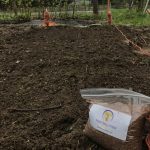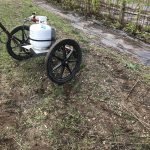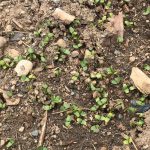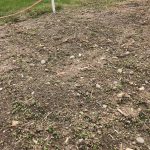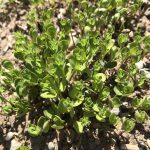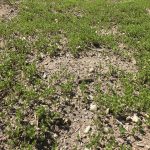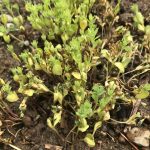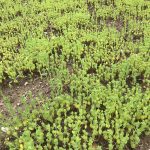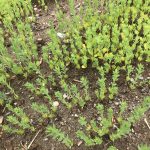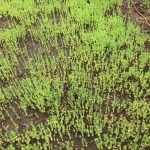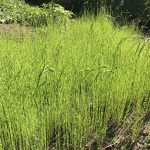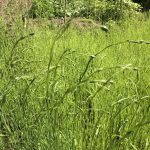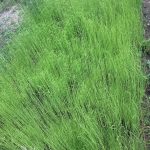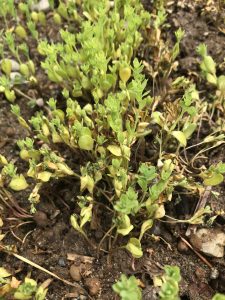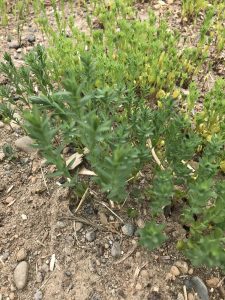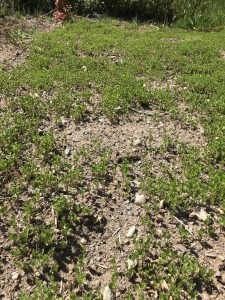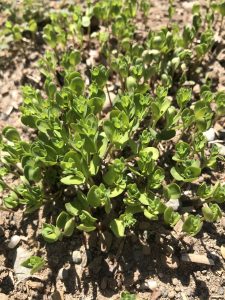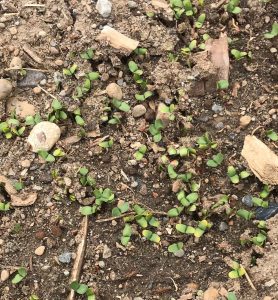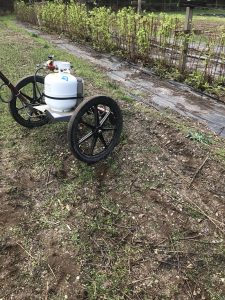Because Spring Quarter is ending, I decided it would be a good idea to put the past 10 weeks’ growth into a chronological, visual timeline with notes about each week’s progress. The idea for this is to be able to combine it with this Summer’s progress in order to create a full timeline that covers the progress from seed to textile.
April 10 – 11: Flame weeding and seeding.
In order to prep the bed, I flame weeded the patch and then hand weeded the hard ones. I broadcasted the 0.5lb Fibrevolution ‘Agatha’ seeds over a 5′ x 10′ bed, covered the seeds, and did not irrigate.
April 20: Germination
9 days post-seeding, I saw the first results of germination. My broadcasting was definitely less accurate than I thought, because there was a bit of sparseness in planting.
May 5: Cotyledon stage
At this stage, all of the flax that was going to germinate had already done so. The cover remained a bit sparse but continued to look healthy. During this time frame we had received a steady amount of rain.
May 15: Parched and sad 🙁
Some of the flax began to look very nutrient deficient and burnt. This was after the first dry patch of the season so I quickly learned that flax does need watering if planted in sandy soil. I watered the plants well and applied a kelp spray to the crop.
May 17: Recovering flax
After a couple days of watering and allowing the foliar spray to take effect, the flax began to look much, much better.
May 22: Thriving!
After a week of consistent watering every two days and another foliar spray application, the flax began to really perk up and speed up in growth.
June 5: Beginning to bloom
After two weeks of regular watering and consistently warm weather, the flax really took off and began to bloom.
June 12: First flowers
After two months since sowing, the flax is reaching its full height and has begun flowering! Just a few more weeks and it should be ready for harvest
